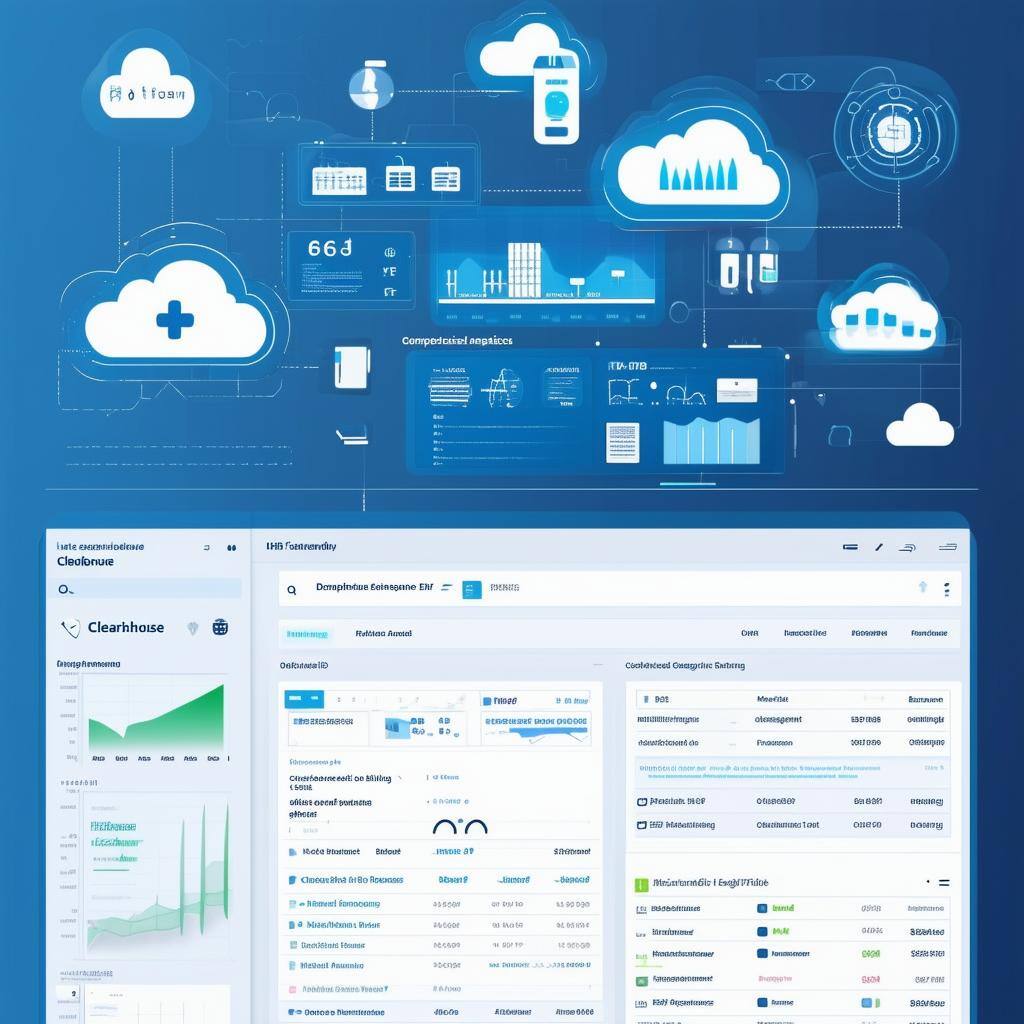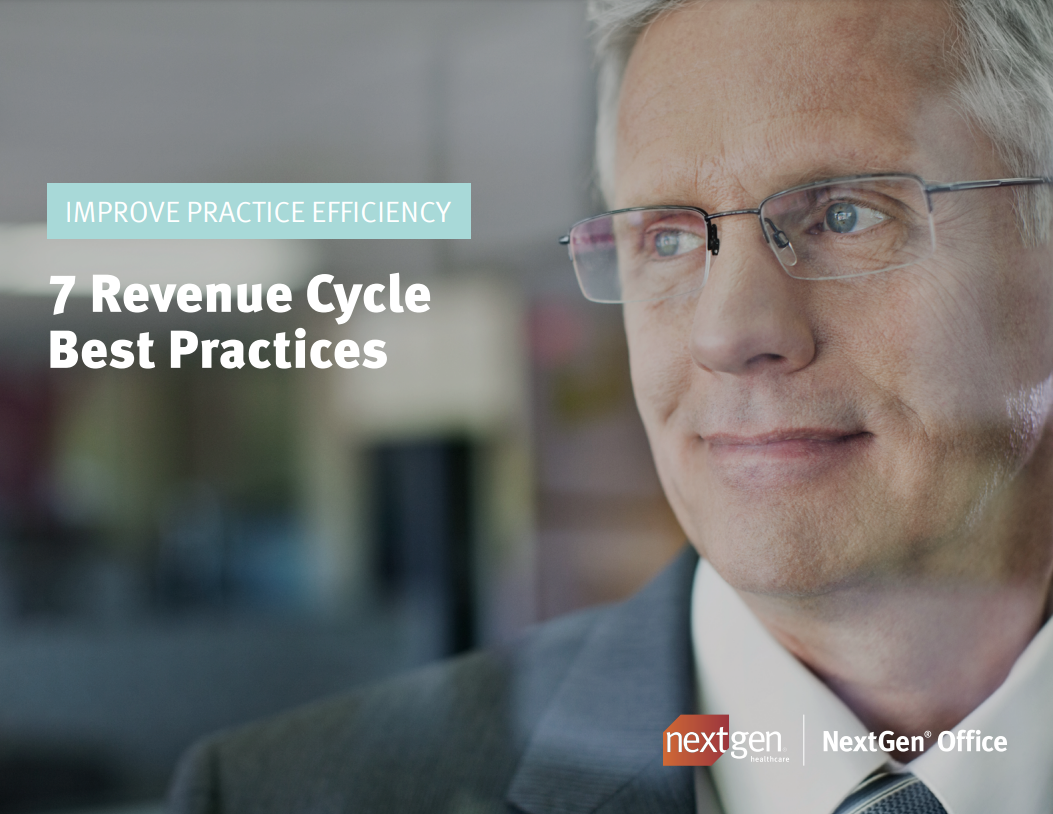NextGen Office vs Medisoft: 8 Key Advantages for Practice Management
When it comes to practice management software, NextGen Office stands out as a superior choice compared to Medisoft. Here are the top 5 reasons why...
5 min read
AVS Medical : Nov 6, 2023 7:30:00 AM

Discover the benefits of using practice management software to streamline your practice and improve efficiency.
In today's fast-paced healthcare industry, it is essential for medical practices to have efficient and streamlined processes. This is where practice management software comes in. Practice management software is a powerful tool that helps medical practices manage their day-to-day operations and administrative tasks more effectively.
One of the main reasons why practice management software is essential for your medical practice is its ability to automate various tasks. With practice management software, you can automate appointment scheduling, patient registration, billing, and other administrative tasks. This not only saves time but also reduces the risk of errors and improves the overall efficiency of your practice.
Another key benefit of practice management software is its ability to centralize and organize patient data. With practice management software, you can store and access all patient information in one secure location. This makes it easier for your staff to retrieve patient records, track medical history, and provide personalized care to your patients.
Practice management software also provides advanced reporting and analytics capabilities. You can generate detailed reports on various aspects of your practice, such as revenue, patient demographics, and appointment statistics. These insights can help you make data-driven decisions and identify areas for improvement in your practice.
Furthermore, practice management software often integrates with electronic health record (EHR) systems, allowing for seamless coordination between administrative and clinical tasks. This integration eliminates the need for manual data entry and ensures that patient information is accurate and up to date across all systems.
Overall, practice management software is essential for your medical practice because it streamlines your operations, improves efficiency, and enhances patient care. By automating tasks, centralizing patient data, and providing advanced reporting capabilities, practice management software helps you save time, reduce errors, and make informed decisions for the benefit of your practice and your patients.
Practice management software offers a wide range of key features and benefits that can greatly enhance the efficiency and effectiveness of your medical practice.
One of the key features of practice management software is appointment scheduling. With practice management software, you can easily schedule and manage appointments for multiple providers and locations. The software can also send automatic reminders to patients, reducing the number of no-shows and improving overall scheduling efficiency.
Another important feature of practice management software is billing and invoicing. The software automates the billing process, allowing you to generate and send accurate and timely invoices to patients and insurance companies. This not only saves time but also improves revenue cycle management and reduces the risk of billing errors.
Practice management software also offers robust patient management capabilities. You can store and access patient information, including medical history, demographics, and insurance details, in one centralized system. This makes it easier to provide personalized care, track patient progress, and communicate with patients securely.
Additionally, practice management software often includes reporting and analytics tools. You can generate customized reports on various aspects of your practice, such as financial performance, patient demographics, and appointment statistics. These reports help you gain valuable insights into your practice and make data-driven decisions for improvement.
One of the key benefits of practice management software is its ability to integrate with other systems, such as electronic health record (EHR) systems. This integration allows for seamless data exchange between administrative and clinical tasks, eliminating the need for duplicate data entry and ensuring accurate and up-to-date patient information across all systems.
Overall, practice management software offers numerous key features and benefits that can streamline your practice, improve efficiency, and enhance patient care. From appointment reminders, eligibility verification and billing to patient management and reporting, practice management software helps you automate tasks, centralize data, and make informed decisions for the success of your practice.
Choosing the right practice management software is a crucial decision that can greatly impact the efficiency and success of your medical practice. Here are some key factors to consider when selecting practice management software:
1. Features and Functionality: Assess your practice's specific needs and look for software that offers the necessary features and functionality. Consider aspects such as appointment reminders, scheduling, billing and invoicing, patient management, reporting, and integration capabilities.
2. Ease of Use: The software should be user-friendly and intuitive, allowing your staff to easily navigate and utilize its features. Consider conducting demos or trials to evaluate the user experience.
3. Integration with EHR Systems: If you already have an electronic health record (EHR) system in place, ensure that the practice management software integrates seamlessly with it. This integration eliminates the need for duplicate data entry and ensures data accuracy across systems.
4. Scalability: Consider the future growth and expansion plans of your practice. Choose a software solution that can accommodate your practice's evolving needs and can scale as your practice grows.
5. Security and Compliance: Patient data security should be a top priority. Ensure that the software complies with industry standards and regulations, such as HIPAA, to protect sensitive patient information.
6. Customer Support: Evaluate the level of customer support provided by the software vendor. Ensure that they offer timely and reliable support to address any issues or questions that may arise.
By carefully considering these factors and evaluating multiple software options, you can choose the right practice management software that aligns with your practice's needs and goals, ultimately improving efficiency and enhancing patient care.
Implementing practice management software in your medical practice requires careful planning and execution. Here are some key steps to successfully implement practice management software:
1. Set Clear Goals: Define the goals and objectives you want to achieve with the implementation of practice management software. This could include streamlining administrative tasks, improving billing efficiency, or enhancing patient communication.
2. Evaluate Current Processes: Assess your current workflows and processes to identify areas that can be improved with the use of practice management software. This will help you determine the specific features and functionalities you need.
3. Select a Vendor: Research and select a reputable vendor that offers practice management software that aligns with your practice's needs. Consider factors such as features, price, customer reviews, and customer support.
4. Train Staff: Provide thorough training to your staff on how to effectively use the practice management software. This will ensure that everyone is comfortable and proficient in using the software for their respective roles.
5. Data Migration: If you are migrating from an existing system, ensure a smooth transition of your data to the new practice management software. Work closely with the software vendor to ensure data integrity and accuracy.
6. Test and Optimize: Conduct thorough testing of the software before fully implementing it in your practice. Identify any issues or areas for improvement and work with the vendor to address them.
7. Rollout and Support: Gradually rollout the practice management software in your practice, starting with a pilot group if necessary. Provide ongoing support and training to address any questions or concerns that may arise.
By following these steps and investing time and effort into the implementation process, you can successfully integrate practice management software into your medical practice and reap its benefits in terms of improved efficiency and streamlined operations.
Once you have implemented practice management software in your medical practice, it's important to maximize its efficiency and make the most out of its features. Here are some tips to help you maximize the efficiency of your practice with practice management software:
1. Regularly Update and Maintain Data: Ensure that patient information, appointment schedules, and other data are regularly updated and maintained in the practice management software. This will help avoid confusion and ensure accurate information across systems.
2. Utilize Automation Features: Take advantage of the automation features offered by the practice management software. Set up automatic appointment reminders, billing processes, medical eligibility verification, Medical Billing Statements and other repetitive tasks to save time and reduce manual errors.
3. Leverage Reporting and Analytics: Make use of the reporting and analytics capabilities of the software to gain insights into your practice's performance. Analyze key metrics such as revenue, patient demographics, and appointment statistics to identify areas for improvement.
4. Streamline Communication: Use the practice management software's communication features to streamline communication with your staff and patients. Send secure messages, share test results, and provide updates to enhance collaboration and patient care.
5. Continuously Train and Educate Staff: Provide ongoing training and education to your staff to ensure they are fully utilizing the practice management software's features. This will help maximize efficiency and ensure everyone is up to date with the latest functionalities.
6. Regularly Evaluate and Optimize Workflows: Continuously evaluate your workflows and processes to identify any bottlenecks or areas for improvement. Work with your staff to optimize workflows and make necessary adjustments to maximize efficiency.
By implementing these tips and actively utilizing the features and capabilities of practice management software, you can significantly improve the efficiency of your medical practice. From data maintenance and automation to leveraging analytics and optimizing workflows, practice management software can help you streamline your operations and provide better care to your patients.

When it comes to practice management software, NextGen Office stands out as a superior choice compared to Medisoft. Here are the top 5 reasons why...

Discover how a cloud-based practice management system can revolutionize your medical practice and improve efficiency.

Now more than ever—consider a new approach to your revenue cycle Effective revenue cycle management has become more critical for ambulatory medical...